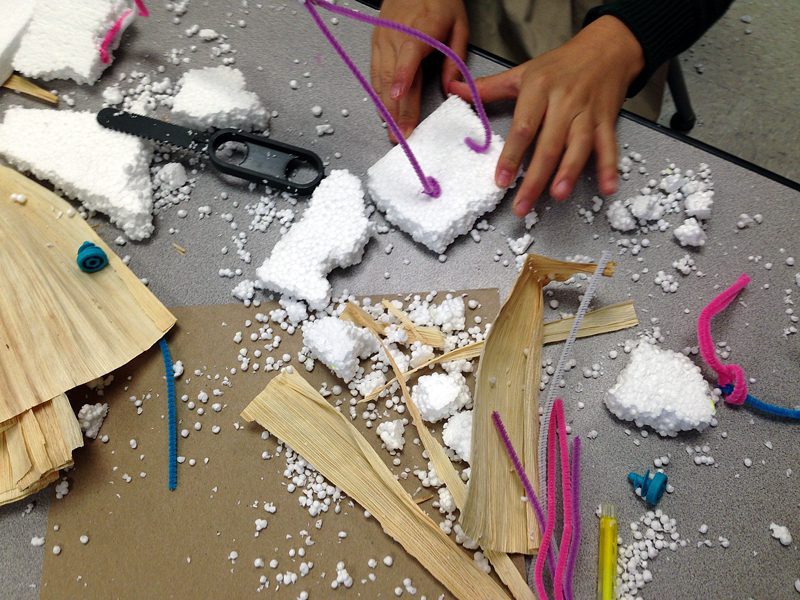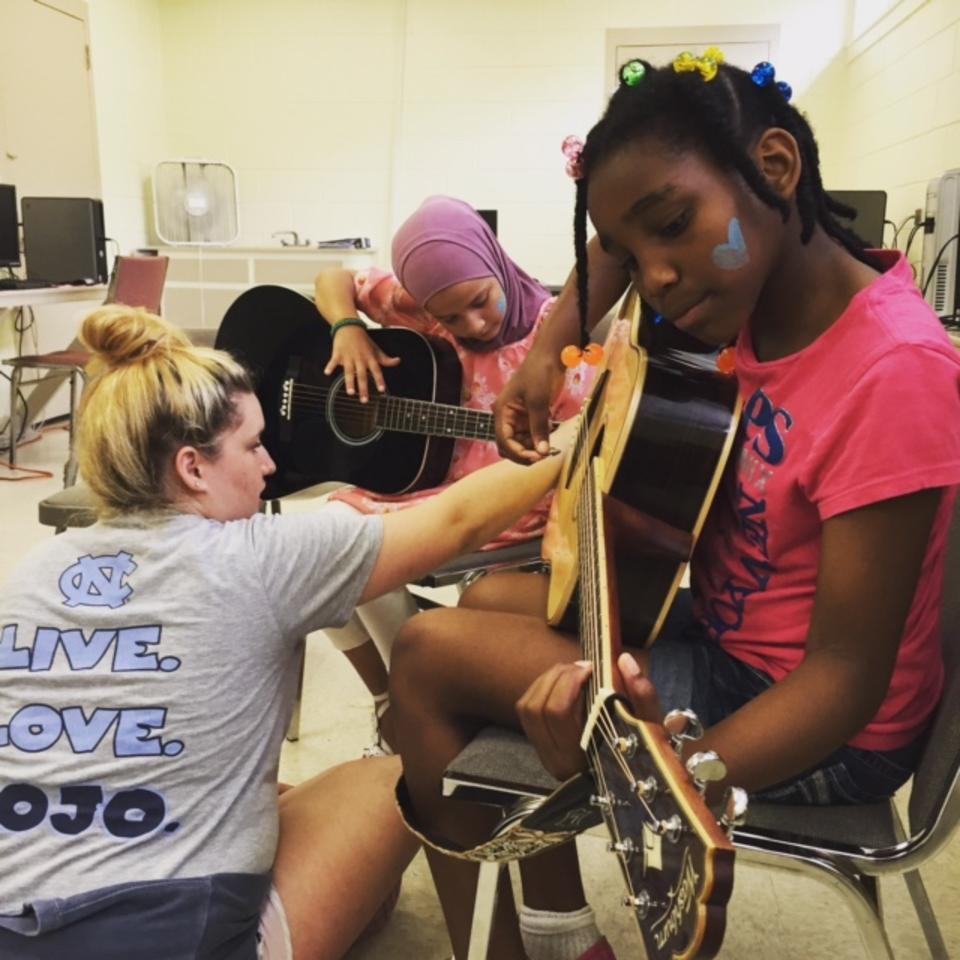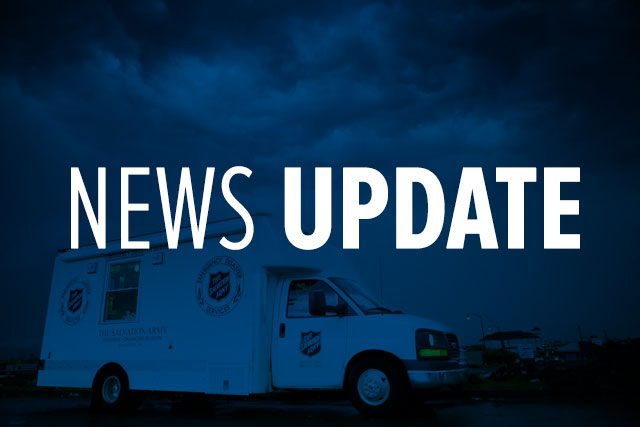The Salvation Army continues to serve the Gulf Coast.
“I just had a feeling. I had a full tank, so I packed up some food and some stuff. I told the kids, ‘Get inside,’ and just started driving north [toward Atlanta],” said Constanza Porche, whose home was destroyed in 2005 by Hurricane Katrina.
Porche and her family did not return to Louisiana for a month. When they did, they settled in Baton Rouge and Porche commuted to work in New Orleans. They later lived in various hotel rooms and rental apartments in New Orleans until The Salvation Army stepped in.
Her new home is one of dozens built by the Army and Project Home Again.
“When I first walked through the door, I thought about how grateful I was to have a home,” Porche said. “I just felt so comfortable and so blessed to have somewhere that’s mine. It’s a home because a home is what you make it. They allowed us to do that.”

Volunteers, workers, and companies helped make the post-Katrina rehoming efforts possible through The Salvation Army. Ten years later, Porche said those people are still on her mind and in her heart.
“They made it their daily work to make sure that someone had somewhere to live—that they had a place of their own,” she said. “They made sure I wasn’t still out there, struggling, feeling like I was still in the floodwaters.”
The 2005 hurricane season—which included hurricanes Katrina, Rita and Wilma—spurred The Salvation Army’s largest emergency disaster response ever recorded, totaling $382 million.
“This was an unprecedented relief effort and would not have been possible without a generous outpouring of support,” said Commissioner David Jeffrey, national commander for The Salvation Army in the U.S. “It has been an honor to serve the people of the Gulf Coast and partner with them to rebuild their vibrant communities.”
When the storms hit, Salvation Army emergency disaster workers and volunteers delivered $157 million of relief in the form of shelter, food and hydration, as well as emotional and spiritual care.
The Salvation Army transitioned to long-term recovery in January 2006, allocating another $225 million toward the effort. These recovery services focused on case management, reconstruction and support for volunteer rebuild teams. Financial assistance programs also helped with home repair, job training and other initiatives to aid long-term recovery in communities.
Volunteers, staff and officers have worked to restore basic social service programs to the Gulf Coast—reopening shelters, community centers, a rehabilitation center, children’s programs and church services.
As part of its overall recovery program in New Orleans, The Salvation Army initiated a community-based disaster recovery and economic resilience initiative called EnviRenew. Through this initiative, the Army supported new home construction, green home technology, and eco-friendly energy programs in the hard-hit Broadmoor, Riverview and St. Anthony’s neighborhoods. The program sparked a broader conversation about disaster resilience that culminated in a Resiliency Summit on the fifth anniversary of the disaster.
Because responding to disasters takes a toll on responders, The Salvation Army also invested in local disaster and resilience programming including training, equipment and infrastructure, emotional and spiritual care, and increased post-deployment follow up services for disaster workers.

Now, 10 years later, The Salvation Army’s presence in these communities is strong.
“The Army has always had a good relationship with the community and had a nice service footprint, but I think now one of the things that we see is…because of the immeasurable and immense amount of work that The Salvation Army did in the wake of Katrina, people are a little bit more cognizant of what it does and thankful of what the Army does to reach out to those in need in our community,” said Major David Worthy, area commander for The Salvation Army in New Orleans. “The community is grateful that the Army was here before Katrina, during Katrina, and certainly now 10 years after Katrina.”
According to Worthy, while formal recovery efforts have waned, some of the individuals still receiving case management were residents impacted by Hurricane Katrina.
“Every day we see folks coming to our facilities who have needs that have resulted from the impact by Katrina,” Worthy said. “So those services have been retooled and reconfigured to meet the needs of the community. Our service footprint that exists now really isn’t too much different than what it was before Katrina. We just sort of now have been relieved of all the disaster recovery work and are now back to doing what The Salvation Army does in the average community across the country.”
More importantly, Hurricane Katrina has helped prepare the Army for future disaster response efforts.
“An event like Katrina will never impact New Orleans like Katrina did because the community is more well prepared now,” Worthy said. “It’s increased our resolve as it has the community at large…We’re much more well positioned because of what the people have gone through—our staff, officers, and the community. We’re much more well positioned to meet needs of those who come to us now and in days ahead.”
With reporting by Vivian Gatica Lopez and Jessica Shaw
__________________________________
2005 Hurricane Season Immediate Response Efforts
-
178 canteen feeding units and 11 field kitchens brought in from across the country
-
More than 5.6 million hot meals and 8.2 million sandwiches, snacks and drinks served
-
178,313 cleaning kits and 235,229 food and grocery boxes distributed
-
282,000 emergency disaster assistance cases registered
-
Emotional and spiritual care provided to more than 275,000 individuals
-
Direct financial aid delivered, in the form of gift cards and housing and utility assistance
-
More than 2.6 million survivors in the affected region served by The Salvation Army
__________________________________
Improvements and additions to Salvation Army facilities in the Gulf Coast include:
-
A new Emergency Disaster Services center in Jackson, featuring an emergency operations room, 17,000 square feet of warehouse space, a state-of-the-art amateur radio station and a vehicle yard for a fleet of specialized disaster equipment and vehicles
-
Reopened corps, social services programs, a homeless shelter, Adult Rehabilitation Center and family store in New Orleans
-
A 52,000-square-foot Ray and Joan Kroc Corps Community Center in Biloxi to replace Salvation Army facilities lost during Hurricane Katrina, built on the site of one of the volunteer villages that The Salvation Army operated for Katrina aid workers
-
Reopened corps, social services programs, a homeless shelter and family store in Gulfport, Pascagoula and Lucedale; The Salvation Army is presently acquiring property in Gulfport to develop a new Center of Hope housing program for the Mississippi Gulf Coast















